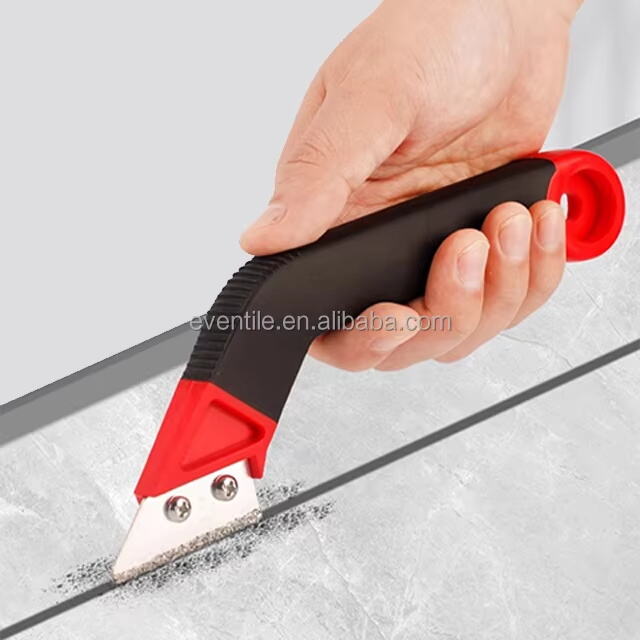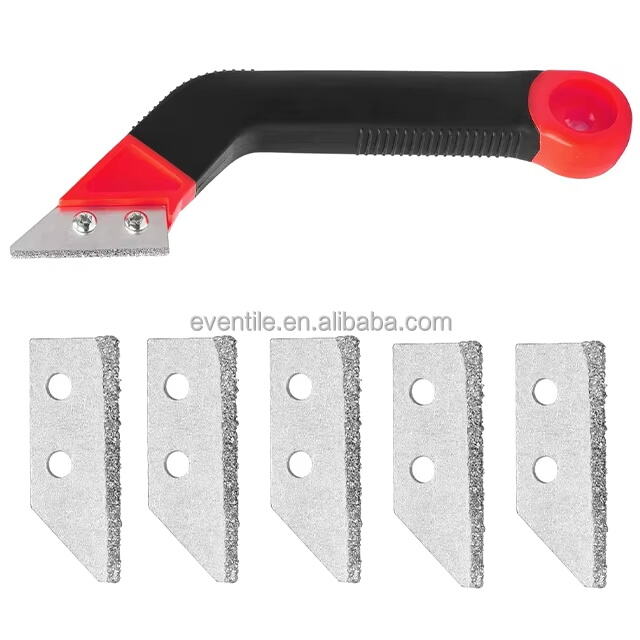The Role of Tile Leveling Clips in Tile Installation
Tile installation is a precise job that requires both patience and accuracy. One of the most useful innovations in modern tiling is the use of Tile Leveling Clips. These clips make sure tiles remain level, aligned, and free from lippage while the adhesive sets. For professionals, they ensure efficiency and consistency. For DIY homeowners, they provide a way to achieve a professional finish without years of experience. But what happens after the adhesive cures? Removing Tile Leveling Clips cleanly is an essential step to guarantee the durability and visual perfection of the finished surface. Proper removal techniques protect tile edges, preserve grout spaces, and maintain the flawless appearance of the installation.
Understanding Tile Leveling Clips
Purpose of Tile Leveling Clips
Tile Leveling Clips are specifically designed to prevent uneven tile placement. Their main role is to lock tiles together so that no tile sits higher or lower than its neighbor. Without this system, installers risk leaving small height differences that can create tripping hazards or simply look unattractive. The use of Tile Leveling Clips helps eliminate these common issues.
Beyond alignment, the clips also help maintain consistent spacing between tiles. This means grout lines remain uniform across the entire surface, enhancing both function and appearance. By creating a controlled and stable environment during curing, Tile Leveling Clips ensure the installer has peace of mind and the homeowner enjoys lasting results.
How They Function During Installation
Tile Leveling Clips operate through a base that sits under the tile and a wedge or tightening mechanism that presses down from above. This system holds each tile securely in place, preventing movement as the adhesive sets. Once the adhesive hardens, the visible parts of the clip can be snapped off, leaving only the base beneath the tile.
This process simplifies tile installation dramatically. Instead of constantly checking for level alignment, installers can trust the clips to maintain the correct position. In turn, this reduces errors, speeds up the project, and ensures results that meet professional standards.

Preparing for Removal of Tile Leveling Clips
Timing for Best Results
Timing is one of the most crucial aspects of removing Tile Leveling Clips. If the clips are removed too soon, the tiles may shift, undoing the entire leveling process. If removed too late, the clips may be difficult to break cleanly, which can result in uneven breaks or fragments sticking between tiles.
Most adhesives require at least 24 hours of curing before clip removal. However, the exact time depends on environmental conditions such as temperature and humidity. Reading the adhesive manufacturer’s instructions ensures you remove the clips at the optimal moment, protecting both tiles and grout lines.
Tools That Make Removal Easier
Although Tile Leveling Clips are designed to snap off without much effort, having the right tools makes the process cleaner and safer. A rubber mallet is the most commonly used tool, allowing you to deliver controlled taps that break the clips at their weak points.
In addition, pliers or a small utility knife may be useful for clearing away stubborn fragments that remain after snapping. Wearing protective gloves and safety glasses reduces the risk of injury, especially when working on large tiled areas. With the right preparation, the removal process becomes smooth and efficient.
Step-by-Step Removal Process
Positioning Before Breaking Clips
Before starting, it’s important to position yourself correctly. Stand directly above the Tile Leveling Clips and face the grout joint. This position ensures that the force you apply travels in the right direction and minimizes the risk of damaging tile edges.
Good positioning also gives you more control. With a clear line of sight and balanced posture, you can deliver consistent taps without putting unnecessary pressure on one tile. By maintaining proper alignment, you protect both the surface and the tools you are using.
Breaking Clips in the Correct Direction
Tile Leveling Clips are engineered with a weak point near the base, which allows them to break cleanly when struck correctly. The proper method is to tap the clips along the grout line rather than at an angle. This ensures they snap at the intended spot, leaving no visible residue.
Striking at the wrong angle may cause uneven breaks, leaving small pieces of plastic between tiles. These fragments can interfere with grouting later and may require extra cleaning. Controlled, gentle taps along the grout line provide the best outcome, protecting the overall look of your tile installation.
Common Mistakes to Avoid
Removing Clips Too Early
One frequent error is removing Tile Leveling Clips before the adhesive has fully cured. Doing so can cause tiles to shift out of position, creating lippage or uneven grout lines. While it may be tempting to speed up the process, patience ensures better long-term results.
Waiting for the recommended curing time is always the best approach. Even if the tiles look stable, premature removal can compromise the final finish. Following proper timing helps secure the durability of the installation.
Using Excessive Force
Another common mistake is striking the clips too hard. Although Tile Leveling Clips are designed to break easily, applying unnecessary force can damage tiles. Small chips along the edges are not only unsightly but can also weaken the tile structure.
Using controlled force with a rubber mallet is the safest method. Gentle taps achieve the desired result without creating additional risks. If a clip does not break on the first attempt, it is better to try again carefully rather than resort to heavy blows.
Cleaning After Removal
Inspecting Tile Joints
Once the clips have been removed, it is important to inspect all grout lines carefully. Leftover plastic fragments or uneven breaks can cause problems during the grouting stage. A close inspection allows you to identify and fix any issues before moving forward.
This step also ensures that grout flows evenly into every joint. Clean joints improve both the durability and the appearance of the grout, creating a smoother finish that complements the tile layout.
Preparing for Grouting
After inspection, clean the tiled surface thoroughly. Use a vacuum or damp cloth to remove dust, plastic bits, and other debris. A clean surface ensures that grout adheres properly, reducing the risk of cracks or discoloration later on.
Proper cleaning not only improves appearance but also extends the life of the grout. With all debris removed, the grout can form a solid bond with the tiles, leading to long-lasting results.
Tips for Easier Tile Leveling Clip Removal
Choosing High-Quality Clips
Not all Tile Leveling Clips perform the same. Higher quality clips are designed to snap cleanly and consistently, making removal easier. Investing in better clips saves time during both installation and removal while reducing the risk of problems.
High-quality clips are also less likely to break unevenly. This means fewer leftover fragments and less cleanup. Choosing reliable products helps you achieve the best possible results with minimal frustration.
Using the Correct Tile Thickness
Tile Leveling Clips are made for different tile thicknesses. Using the wrong size can cause problems during installation and removal. Clips that are too small may break prematurely, while oversized clips may not hold tiles correctly.
Matching the clip size to your tile thickness ensures proper performance. This attention to detail makes removal smoother and guarantees a professional-quality finish.
Advanced Considerations for Professionals
Working with Large Format Tiles
Large format tiles are more prone to lippage due to their size. Tile Leveling Clips are especially useful in these cases, but their removal requires extra care. Applying even pressure across larger surfaces helps prevent breakage or uneven snaps.
Some professionals use specialized pliers or removal tools for added control. These tools allow for consistent pressure, ensuring clean results across expansive tiled areas.
Adjusting for Different Adhesives
Different adhesives cure at different speeds. Some may harden within 12 hours, while others require more than 24 hours. Environmental factors such as humidity and temperature also affect curing time.
Professionals often adjust their removal schedule based on these conditions. Monitoring adhesive performance ensures that Tile Leveling Clips are removed at the ideal moment, balancing efficiency with precision.
Maintaining Tile Integrity After Removal
Avoiding Edge Damage
Tile edges, particularly with materials like porcelain or natural stone, can be fragile. Twisting or forcing Tile Leveling Clips during removal increases the risk of chips or cracks. Careful, controlled removal protects these delicate edges.
Taking the time to handle each clip properly is always worth the effort. Preserving tile edges not only maintains the beauty of the installation but also enhances its long-term durability.
Preparing for Longevity
Clean and careful removal is essential for the longevity of your tiles. Any leftover fragments or edge damage can weaken the surface over time. By removing Tile Leveling Clips correctly, you set the foundation for a strong, attractive finish that lasts.
In the long run, proper removal ensures the tiled surface remains both functional and visually appealing. This step protects the investment made in both materials and labor.
FAQ
How long should I wait before removing Tile Leveling Clips
Most Tile Leveling Clips should be removed about 24 hours after installation, but the exact time depends on the adhesive and environmental conditions. Always follow the adhesive manufacturer’s recommendations.
Can Tile Leveling Clips be reused
Tile Leveling Clips are designed for single use only. Once they are snapped, they cannot be reused. However, wedges from some systems can often be reused multiple times.
What tools are best for removing Tile Leveling Clips
A rubber mallet is generally the best choice. For stubborn fragments, pliers or a utility knife may also be used carefully to avoid scratching tiles.
What happens if Tile Leveling Clips are removed too late
If clips are removed too late, they may not snap cleanly and could leave fragments behind. This makes grouting more difficult and may require extra cleaning before completion.
Table of Contents
- The Role of Tile Leveling Clips in Tile Installation
- Understanding Tile Leveling Clips
- Preparing for Removal of Tile Leveling Clips
- Step-by-Step Removal Process
- Common Mistakes to Avoid
- Cleaning After Removal
- Tips for Easier Tile Leveling Clip Removal
- Advanced Considerations for Professionals
- Maintaining Tile Integrity After Removal
- FAQ


